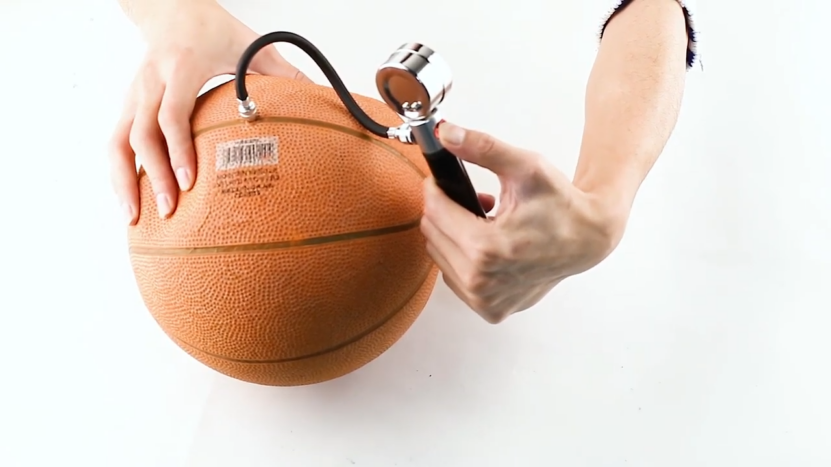Mark’s been waiting all week to show off the skills he learned at basketball camp. After all, he struggled through three weeks of hard practices – drills filled with dribbles, free throws, passes, and his specialty, three-point shots. He deserves to show off a bit.
He’s on the neighborhood court with his friends. His best friend Nathan throws in the ball, and he brings it up the court. Already, though, he can tell that something isn’t right. The ball isn’t bouncing off the court like it should, nor is it moving right in his hand.
The guy defending him laughs as Mark hesitates. His face turns red. He wants to teach the defender a lesson and so he throws up a quick three, a hurried shot but one he nailed hundreds of times at camp. He watches the ball rise from the tips of his fingers up in an arc, and he knows almost immediately: it’s an air ball.
Now everyone is laughing, but it’s not Mark’s fault. The ball was flat, and flat balls don’t handle or fly through the air like they should.
Of course, Mark could have avoided this situation – and his new nickname, Air – if he had a ball pump with him and checked the ball before the game.
The Importance of Proper Ball Inflation
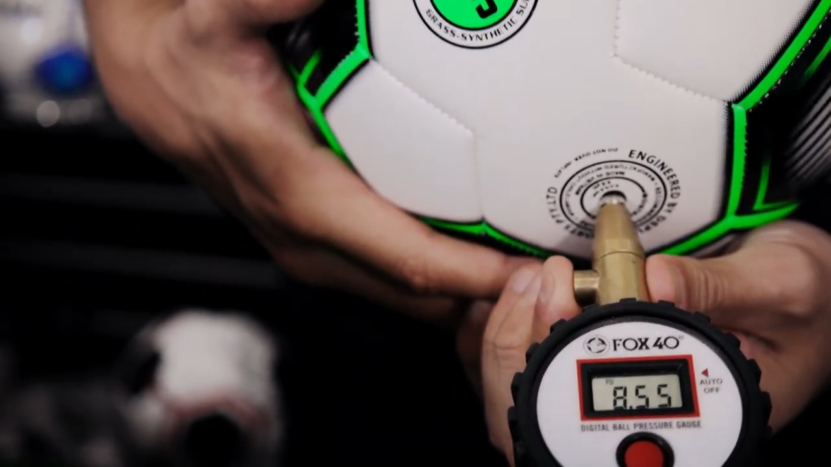
As the story above illustrates, when a sports ball is not properly inflated it will affect your game. Mark didn’t know that you can test the bounce of a basketball easily – a properly inflated basketball when dropped from shoulder height should bounce back to a height approximately even with your hips.
The higher the air pressure inside the basketball, the higher it will bounce. However, if a ball is not inflated fully, it will bounce low and erratically. On the other hand, an over-inflated basketball ball might break the bladder and cause leaks and there will be no consistency to the ball’s bounce. Nobody wants that, which is why it’s important to check your ball’s pressure and keep a ball pump on hand.
But what kind of pump is best?
Nowadays there are many types of handheld ball pumps to choose from. The most popular are portable and light enough to fit into your sports bag or pocket.
There are generally two variations of the handheld pumping mechanism from which to choose: a mechanism where you squeeze a valve and one where you push and pull a pump.
Among the push and pull kind, there are the standard ball pumps, which only push air in on the forward stroke, and dual-action ball pumps, which pump air in on both strokes.
The dual action ball pump
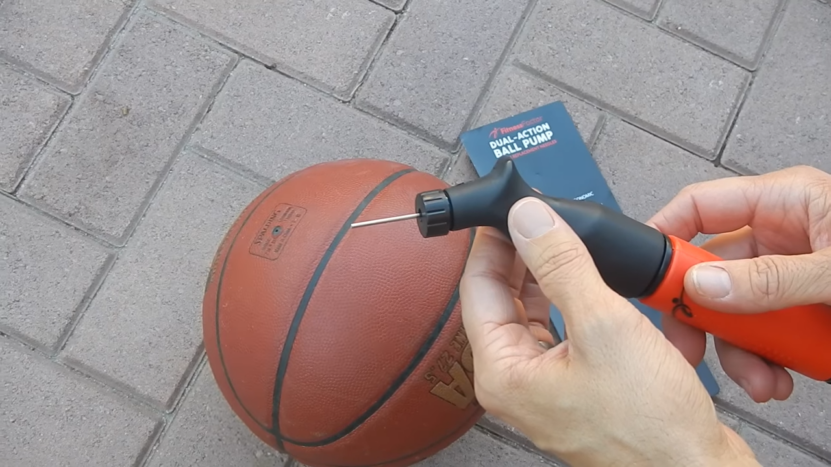
Dual action ball pumps are very efficient compared to standard pumps, as no air or effort is wasted because they pump air into the ball both when you push and pull the handle.
Engineers have achieved this effect by sealing the cylinder of the dual action ball pump at both ends. The double action pump has two pairs of check valves: one at the bottom of the cylinder and one at the top.
When the pump is extended, air is pulled into one end of the cylinder and expelled out the other side. Likewise, when the pump is contracted, the valves switch to opposite positions, letting air in at the top of the cylinder and out at the bottom.
Standard ball pumps do not feature these types of mechanics and can be very slow. Longer inflation time means inefficiency and arm fatigue. Your palm will most likely hurt yet you need to feel the ball. Bummer!
You’ll get back in the game much faster and with more energy if all you have to do is push and pull the pump a few quick times – as you do with a dual action pump.
When using a dual action ball pump
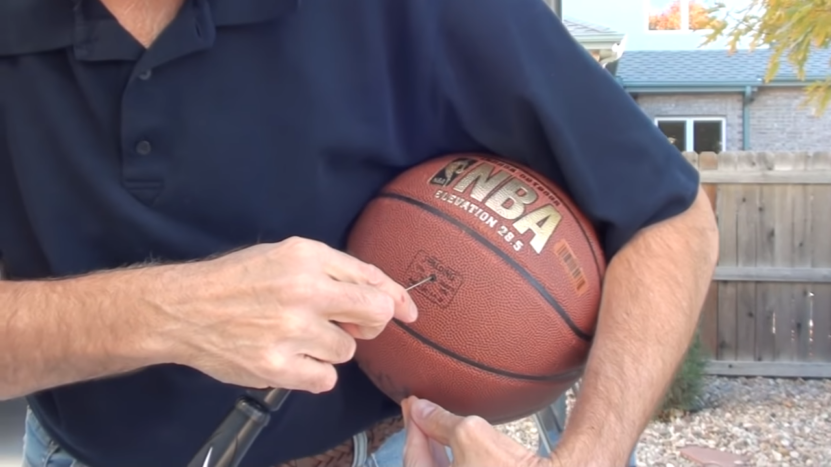
Before inserting the needle of the pump into a ball it is crucial that you do the following:
Lubricate the needle. If you insert a dry needle into a ball, the valve can stretch or tear.
Check the manufacturer’s air pressure specifications for your sports ball – often written in small letters by the air valve.
Hold the needle the steady – avoiding up and down movements – as you insert the needle and inflate the ball. This helps prevent damage to both the needle and valve.
Don’t forget your air gauge
When the ball feels firm enough, one easy way to check the pressure is to insert a lubricated air gauge into the valve flap so you can read the ball’s pressure. You should try to get the pressure as close to the manufacturer’s specifications as possible.
What if you don’t have an air gauge?
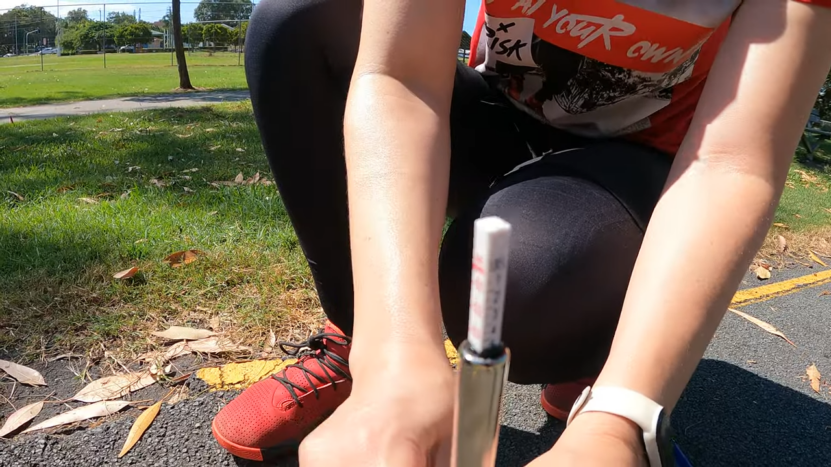
If you don’t have access to an air gauge, there are a few other things you can do to determine whether your ball is properly inflated.
For soccer balls and basketballs, you can bounce the ball on the ground. If you get a nice bounce and a solid bouncing sound you are all set.
For footballs, grasp the ball with both hands and apply pressure with your thumbs. The ball should feel firm, and if it gives under pressure at all, you should barely be able to feel it. Otherwise, you should add more air.
When you’re heading out to play, don’t forget your ball pump – and make sure you have the right kind.

